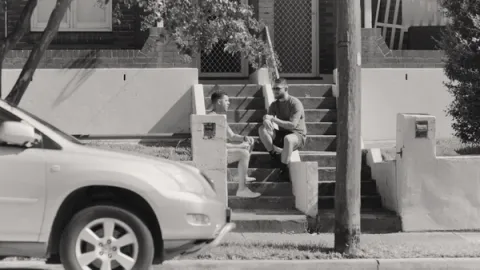Survival rates for testicular cancer

Cancer survival rates are a measure of someone’s likelihood of surviving after a cancer diagnosis.
Survival rates can vary, depending on the stage and type of testicular cancer.
Overall survival rates for testicular cancer are high and have been getting better for years.
It’s the top question on your mind when you’ve been diagnosed with testicular cancer: Am I going to be OK? What are my chances of surviving this?
The odds of beating testicular cancer are quite good, especially when it’s caught and treated early. The overall survival rate is around 95%, and it’s been on the rise for decades.
In this article, we’ll take an in-depth look at the survival rates for different stages and types of testicular cancer.
Three things to know about cancer survival rates
Before we get into the data, there are a few key things you should keep in mind:
1. Every case is different.
Knowing the survival rates for your type and stage of testicular cancer can give you a general idea what to expect. But no amount of data can predict what will happen in any one person’s case. The best thing you can do is keep talking with your doctor about your diagnosis, treatment plan and what to expect.
Some of the data we’ll get into comes from a specific country like the US or Australia. Other studies look at survival rates in multiple countries. We’ll let you know which is which as we go, but keep in mind the actual survival rate could be slightly different where you live.
2. It’s important to know what "survival rate" really means when it comes to testicular cancer.
When we talk about the odds of beating testicular cancer, what we’re measuring is the relative survival rate. According to the American Cancer Society, this is the likelihood of survival as compared to the overall population.
In other words, it’s not a prediction of your personal odds of living a certain number of years after your diagnosis. There are all kinds of variables that impact how long you might live, not just cancer. Some are things you can control; some are out of your hands.
Also important: a “5-year survival rate” doesn’t mean you’re only going to live another five years. The average life expectancy for younger men diagnosed with testicular cancer isn’t all that different than it is for other guys the same age.
So when we say testicular cancer has an overall 5-year relative survival rate of 95%, here’s what that means: you are 95% as likely as the rest of the population to live at least another 5 years.
In fact, your chances of living to a ripe old age are about as good as anyone else’s.
3. Survival rates vary for different stages of testicular cancer
The term stage refers to how advanced the testicular cancer is. Many medical authorities, such as the American Joint Committee on Cancer, categorize different stages of testicular cancer according to a system called TNM. This stands for tumor, nodes, and metastases.
As the name suggests, doctors identify what stage the cancer’s at by looking at tumor size, spread to nearby lymph nodes, and spread (that is, metastases) to other parts of the body.
Testicular cancer stages can be further divided into several smaller stages. But for our purposes here, we’ll focus on survival rates across these three broad stages:
Stage 1: the cancer is confined to the testicles, with little or no indication of spread
Stage 2: some regional spread to nearby lymph nodes, but not other parts of the body
Stage 3: the cancer has spread to lymph nodes and/or organs in other parts of the body
Survival rates by testicular cancer stage
The National Cancer Institute documents survival rates for US men with testicular cancer. While their data is specific to one country, it tracks with data from other countries. When looking at survival rates for different stages of testicular cancer, keep in mind the numbers are based on what stage you’re at when you are first diagnosed.
Stage 1 testicular cancer
5-year survival rate: 99 to 100%
About two thirds of guys with testicular cancer are diagnosed at this stage.
Stage 2 testicular cancer
5-year survival rate: 96%
Around 1 in 5 men are diagnosed at this stage.
Stage 3 testicular cancer
5-year survival rate: 73%
Around 1 in 10 men are diagnosed at this stage.
What if the testicular cancer comes back?
For guys with recurrent testicular cancer, your survival rate is still based on what stage you were at when diagnosed. If testicular cancer comes back, it usually happens within two years of diagnosis and will require additional treatment. According to data from the UK, only 2 to 3% of men with testicular cancer experience a relapse beyond two years. These recurrences should not affect the “survival rate” determined by your initial stage.
Survival rates by testicular cancer type
There are also several different types of testicular cancer, though germ cell tumours are by far the most common.
We’ll look at survival rates for two types of germ cell tumours, seminomas and non-seminomas, which account for roughly 90% of all testicular cancer cases. In each case, the rates were determined using data from two studies (here and here) that looked at thousands of cases in Australia, Europe, and North America, going as far back as 1990.
We’ll also dig into the data on survival rates for another, less common form of testicular cancer: stromal tumors. Germ cell tumors form from cells that make sperm in the testicle. Stromal tumors form from the cells that either generate testosterone (Leydig cells) or the cells that support sperm development (Sertoli cells). Stromal tumors are very rare.
Seminoma survival rates
Stage 1: defined in these studies as limited or no spread outside the testicles
5-year survival rate: 99 to 100%
The survival rate has improved by 10% since 1990.
Stage 2: defined as some spread to other parts of the body
5-year survival rate: 95%
The survival rate has improved by 22% since 1990.
Non-seminoma survival rates
Stage 1:
5-year survival rate: 99%
The survival rate has improved by 4% since 1990.
Stage 2:
5-year survival rate: 95%
The survival rate has improved by 11% since 1990.
Stage 3: defined as cancer that has spread to other parts of the body at the time of diagnosis
67% survival rate
The survival rate has improved by nearly 40% since 1990.
Stromal tumours
Leydig cell tumors: 91% survival rate (5 years)
Sertoli cell tumors: 77% survival rate (5 years)
If stromal testicular cancer spreads beyond the testicles, which is extremely rare, survival rates are much lower, with life expectancy averaging around 1 to 2 years.
Whatever your diagnosis, it can be helpful to talk to someone who’s walked in your shoes and can be a supportive listener.


